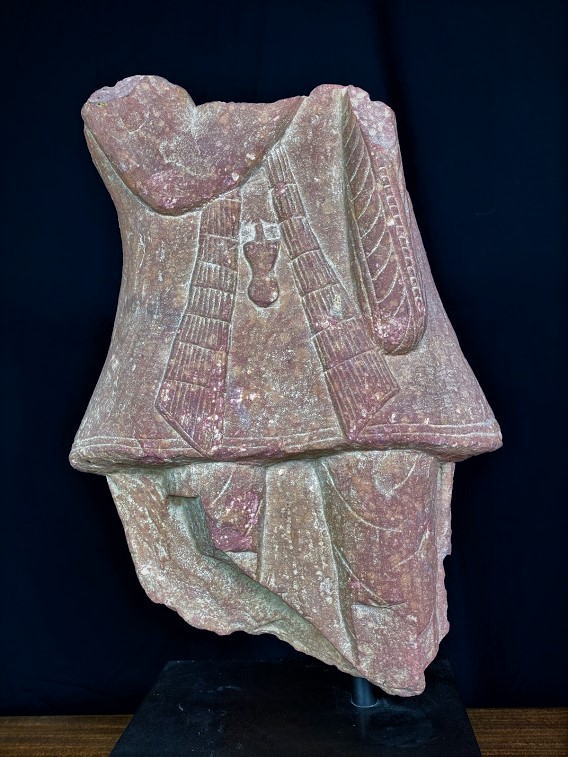1 SANDSTONE HEAD OF A BODHISATTVA
INDIA, MATHURA REGION
KUSHAN PERIOD
2ND CENTURY AD
H. 28 CMS, 11 INS
A magnificent mottled red sandstone head of a Bodhisattva, the face regal and serene, wearing a princely turban with a round cockade at the centre and heavy earrings.
Mathura is located on the right bank of the Yamuna, a tributary of the Ganges some 150 km south of Delhi in Uttar Pradesh. It sits at the junction of India’s trade routes and by the first century AD was a thriving religious and commercial centre. Described by Ptolemy as a ‘City of Gods’, early Indian texts state that the inhabitants lived by trade rather than by agriculture. Hinduism, Buddhism and Jainism all coexisted peacefully, along with the worship of nature-spirits, and traders and acolytes brought religious and cultural influences to the city. Mathura’s heyday lasted from the first to the third century AD, until the Sasanian incursions of the mid-third century. Despite a partial revival under the Gupta rulers of the fourth to the seventh century, the city never regained its former glory and eventually lost its position as a commercial and religious centre. Mathura sculpture is typically produced from mottled red sandstone quarried locally. Popular motifs include sensual young women, mythical beasts, nature and water spirits (yakshis and nagas), architectural elements, flora and fauna, and bacchanalian scenes.
Mathura sculpture is often fleshy and full figured, and its protagonists (both religious and secular) are dressed in diaphanous clothing with multiple folds. While its form is essentially Indian, the influences of Greece and Rome, assimilated via the Silk Road, are also present.
For an almost identical head in the Cleveland Museum of Art, see cat. no. 20. in S. J. Czuma, Kushan Sculpture: Images from Early India. Cleveland: Cleveland Museum of Art, 1985.
Provenance: Private English collection.
 Go back to Works of art
Go back to Works of art











